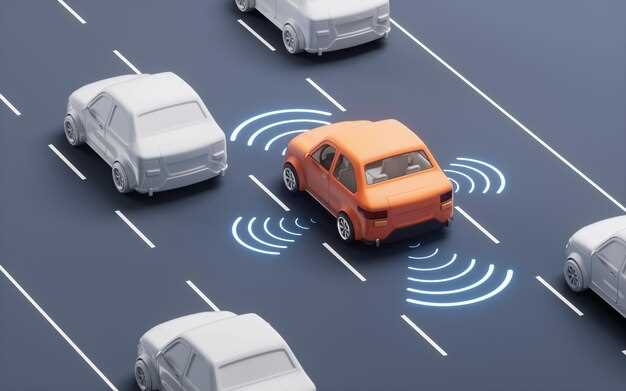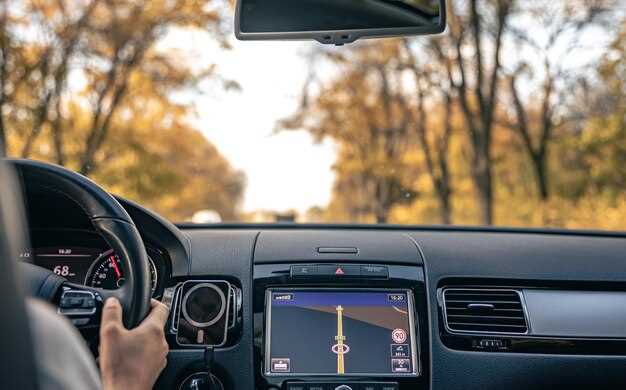
In an era where technology continually transforms our daily lives, the automotive industry is not left behind. Lane assist systems have emerged as pivotal tools aimed at enhancing driving safety. These systems help drivers stay within their designated lanes, minimizing the risk of unintentional lane departures which can lead to serious accidents.
At their core, lane assist technologies utilize a combination of cameras, sensors, and advanced algorithms to monitor a vehicle’s position on the roadway. When a vehicle begins to drift out of its lane without the use of turn signals, these systems provide real-time feedback to the driver. This proactive approach not only alerts drivers but can also intervene by gently steering the vehicle back on course, ensuring a safer driving experience.
The integration of lane assist systems has proven crucial, especially in scenarios where driver fatigue or distractions are prevalent. By automatically assisting in lane keeping, these technologies enhance overall road safety and promote responsible driving habits. As we delve deeper into the mechanics and benefits of lane assist systems, it becomes increasingly clear how they contribute to a safer driving environment for everyone on the road.
Understanding the Technology Behind Lane Assist Features
Lane assist technology utilizes a combination of advanced sensors, cameras, and software algorithms to enhance driving safety. These systems detect lane markings on the road surface to determine the vehicle’s position within its lane. By continuously monitoring the surroundings, lane assist can provide real-time feedback to the driver, ensuring they remain safely aligned within designated lanes.
At the core of lane assist features are cameras that capture visual data from the road. These cameras are typically positioned near the front windshield, providing a clear view of lane markings. The data captured is processed by onboard computers that use sophisticated image recognition algorithms to interpret the road environment. This technology allows the system to discern between various types of lane markings, including solid and dashed lines, while also identifying lane departure scenarios.
To enhance the safety aspect, lane assist systems often include additional components such as radar and lidar sensors. These sensors augment the camera data by assessing the vehicle’s speed and proximity to other road users. By combining information from multiple sources, the system can accurately detect when a driver unintentionally drifts out of their lane and can initiate corrective actions if necessary.
When lane departure is detected, lane assist features can provide haptic feedback through the steering wheel or activate gentle steering interventions to guide the vehicle back into its lane. Some advanced systems even offer lane centering capabilities, actively adjusting steering inputs to maintain the vehicle’s position within the lane, enhancing safety during long drives or in heavy traffic conditions.
As technology continues to evolve, lane assist systems are becoming increasingly sophisticated, integrating with other driver assistance features to create a more comprehensive safety network. Understanding the underlying technology behind these systems highlights their critical role in promoting safer driving experiences and reducing the risk of accidents on the road.
Real-World Benefits of Lane Keeping Assistance in Daily Driving

Lane keeping assistance (LKA) systems are designed to enhance safety by actively monitoring vehicle position within the designated lane. These systems provide critical support to drivers, especially in daily driving scenarios where distractions are common.
One of the primary benefits of LKA is its ability to reduce the likelihood of unintended lane departures. This feature is particularly valuable during long commutes or when navigating through heavy traffic. By using sensors and cameras, the system can detect lane markings and will assist the driver in maintaining proper lane discipline by applying gentle steering inputs.
Furthermore, LKA promotes greater awareness. Many drivers may not realize when they are drifting out of their lane due to fatigue or distractions. The system alerts the driver when they veer off course, allowing for timely corrections. This feedback not only enhances safety but also encourages more focused driving habits over time.
Another significant advantage is the reduction of accidents related to lane departure. Studies have shown that vehicles equipped with lane keeping assistance experience fewer collisions, particularly in highway scenarios. By actively assisting drivers, these systems contribute to a safer driving environment for both the vehicle occupants and other road users.
In addition, LKA systems can ease the stress of driving in challenging conditions, such as inclement weather or during night-time travel, when visibility may be limited. In such situations, the technology assists drivers by providing consistent lane guidance, further enhancing overall driving safety and confidence.
Ultimately, the integration of lane keeping assistance into everyday vehicles signifies a substantial advancement in automotive safety technology, making daily driving experiences not only safer but also more enjoyable.
Limitations and Considerations for Safe Use of Lane Assist Systems

While lane assist systems provide valuable assistance to drivers, it is crucial to understand their limitations to ensure safe operation. These systems rely on cameras and sensors to detect lane markings, but their performance can be adversely affected by several factors. For example, worn or faded lane markings, poor weather conditions such as heavy rain or snow, and nighttime driving may interfere with the system’s ability to accurately detect lanes.
Additionally, lane assist systems may not function well in situations where lane changes are frequent or abrupt. Drivers must remain attentive, as these systems are designed to assist rather than replace human judgment. Over-reliance on lane assist can lead to complacency, compromising overall driving safety. It is essential for drivers to remain engaged and ready to take control if needed, especially in complex driving environments such as construction zones or merging traffic.
Another consideration is that lane assist systems are not foolproof. They may not recognize all road configurations, such as temporary road closures or unusual lane markings. Therefore, drivers should not solely depend on lane assist but instead view it as one of many tools to enhance driving safety. Regular maintenance of both the vehicle and the system is also critical; ensuring sensors are clean and operational can significantly improve functionality.
In summary, while lane assist systems can enhance safety by providing crucial support, awareness of their limitations is vital. Drivers must understand that these systems are supplemental aids, and safe driving requires constant attention and the ability to react to unexpected conditions.



